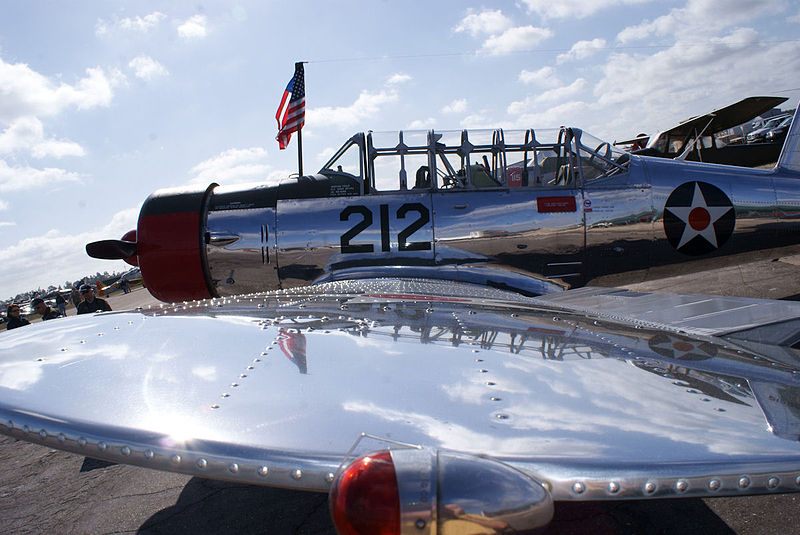In 1995, five veteran friends purchased a Consolidated Vultee BT-13B Valiant, a World War II basic flight trainer. Two of the five, Lloyd Tincher and Cliff Kunkel, are PVE residents as was Duncan Miller, now deceased. The other two are Linn Benson and Mike Hunt.
They were all military veterans and flyers who embarked on a six-and-a-half-year task restoring the vintage plane into flying condition. When purchased, it was a pile of jumbled parts — enough to assemble a plane and a half (except for an engine and propeller). Every part was repaired or replaced, cleaned and painted before final assembly. They also had several volunteers who assisted in the restoration of the historical airplane.
Finally, in early January 2002, tail number N63282 took off into the “wild blue yonder” from the Nut Tree Airport in Vacaville. The owner’s group flew the airplane for 10 years. It won many awards at various airshows. In 2012, partner Mike Hunt bought out the other partners and took the airplane to Anchorage, Alaska and later donated it to the Commemorative Air Force where it is still being flown.
Tail number N63282 was originally based at Minter Field in Shafter, California during World War II and was used as a basic flight trainer. Primary flight training by aviation cadets was done in a Stearman PT-17. The BT-13 is painted in the standard U.S. Army Air Force (USAAF) trainer colors numbering system. It was one of 1,125 BT-13Bs built. This airplane served with the U.S. Army Air Force (USAAF) and later with the Mexican Air Force. It was returned to the United States and used as a crop duster. It was then flown to Marysville, California and lay dormant for 25 years until purchased by the group of five.
During the war, the U.S. Army, Air Force, Navy, and Marines used versions of the BT-13 as basic trainers for aviators. Including all models, over 14,000 variants of the BT-13s were built for the war effort. It is estimated that more than 90 percent of all aviation cadets were trained in the BT-13B Valiant, nicknamed the Vultee Vibrator in recognition of the vibrations caused by the engine. Cadets then went on to advanced pilot training. The BT-13 played a major role in the training of pilots who were vitally important in winning World War II.
The picture of the BT-13B Valiant on display on the Wall of Remembrance in The Club features Lloyd Tincher and Cliff Kunkel behind the controls. You can probably see the grins on their faces in the picture!




